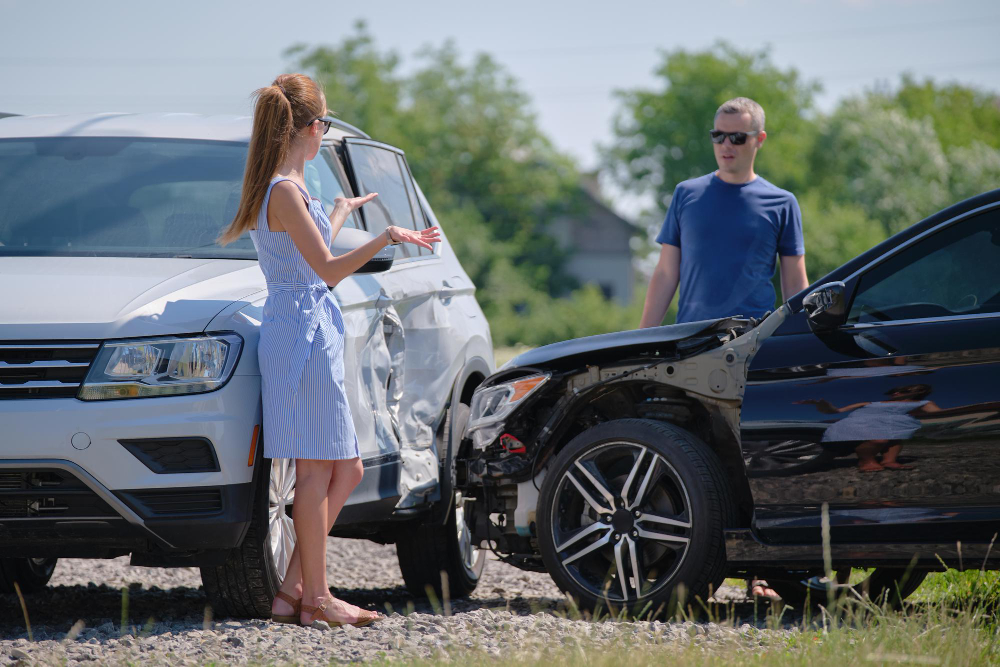Car accidents are as unexpected as they come, and those involved often feel dazed and confused. And, of course, one of the more significant things that comes up after events such as this is accountability.

Knowing how fault is assessed is crucial in ensuring that your claims are handled properly and that all parties get the necessary justice. In this article, we look at the factors and processes that you need to consider when determining liability after an accident.
Understanding Traffic Laws
There are specific traffic laws to keep people orderly on the road and safe while travelling. These are the rules that all drivers should follow when they are on the road. It is these laws that come into play when determining whether one or more drivers broke the rules at the time of a collision. Some behaviours, like running a red light or blowing through a stop sign, are obvious indicators of who is at fault. In many situations, traffic laws being broken can end up causing a disaster. This is why it’s vitally important to pay attention to car accident fault determination rules in NSW.
Gathering Evidence
Gathering evidence is at the heart of the fault determination process. Evidence can include a photograph of the accident scene, a police report, witness statements, and surveillance footage. All the pieces of evidence describe what happened during the incident; all the information helps to form the event. Photos could show the severity of damage to the vehicles, while eyewitness testimony could offer firsthand accounts of how the seconds leading up to the crash played out.
Witness Testimonies
One of the most important sources of information about what happened in an accident is people who were not directly involved: witnesses. These accounts tend to be less biased and frequently highlight something that may go unnoticed. Witnesses can recount the conduct of the individuals driving the cars, how fast the cars were going, and what they did to prevent an accident from happening. Witnesses offer these insights to aid the authorities in arriving at an informed conclusion about fault.
Role of Police Reports
At the accident scene, police officers investigate and write reports that allow for fault determination as one of the most important tools for accident analysis. This type of report often includes observations made by officers, statements from people involved, and any citations that were issued. Police officers also provide unbiased and neutral information as third parties, allowing them to be objective about the current situation. This neutrality helps insurers and lawyers grasp the key facts of the accident.
Assessment by Adjusters of Insurance
An insurance adjuster has a direct hand in the fault determination process. Depending on the evidence and reports, adjusters look at the facts to determine liability. They consider traffic laws, statements, and physical evidence to determine liability. The adjuster’s assessment has a direct impact on the claims process and resolution and how much will be paid to cover the damages and injuries.
Contributory and Comparative Negligence
A single accident can involve more than one at-fault party. Contributory or comparative negligence, as these cases are termed, is handled differently by different jurisdictions. In contributory negligence cases, a driver could be barred from recovering damages if there is any negligence on his part. On the flip side, comparative negligence entitles parties to recovery based on the proportionate role their negligence played.
Accident Reconstruction Experts
Special skills are required by accident reconstruction experts to recreate the events of an accident. Using data on the road conditions, where the vehicles were, and the angle of impact, these experts create detailed reconstructions. These findings bring clarity to otherwise complex scenarios, making certain that all elements playing into the incident have been taken into consideration. Understanding the testimony from reconstruction experts is useful for both legal and insurance proceedings.
Legal Implications
Determining fault carries significant legal implications for those involved in a car accident. Fault affects compensation eligibility, influencing the ability to recover damages for medical expenses, property damage, and lost wages. Legal proceedings might arise if the involved parties disagree with the fault determination, leading to further investigation to ensure a fair outcome. Understanding the legal ramifications of fault determination helps individuals navigate the aftermath of an accident more effectively.
Conclusion
Establishing fault after a car accident is a complicated process that requires analysing a range of evidence, rules, and witness statements. All these factors help portray a clear picture of the incident and who is responsible. A better understanding of the processes that determine fault can help you prepare for the consequences of an accident and ensure that both parties receive adequate compensation and justice.

